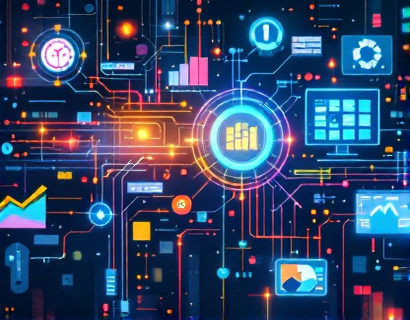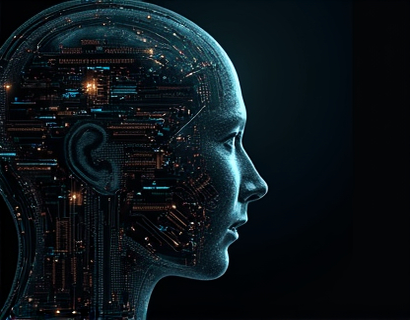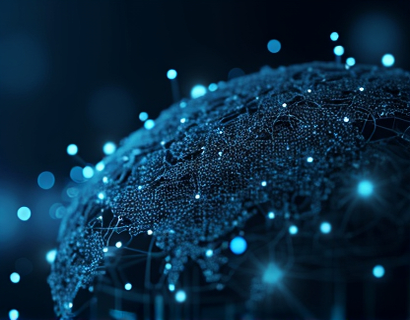AI and Crypto: Transforming Digital Engagement for Next-Gen Ecosystem Experiences
The intersection of artificial intelligence (AI) and cryptocurrency is ushering in a new era of digital engagement, redefining how users interact with online ecosystems. This transformation is not just about enhancing user experiences but also about unlocking unprecedented opportunities for innovation and growth. As technology continues to advance, the integration of AI and crypto is becoming increasingly pivotal in creating dynamic, secure, and user-centric digital environments.
The traditional digital ecosystem has been characterized by static user interfaces and limited interaction capabilities. However, with the advent of AI and blockchain technology, we are witnessing a paradigm shift. AI-driven solutions are enabling more intuitive, personalized, and secure interactions, while cryptocurrency provides a decentralized and transparent means of transaction and value exchange. Together, these technologies are paving the way for a more interconnected and efficient digital world.
Enhancing User Interaction through AI
AI technologies, such as machine learning and natural language processing, are revolutionizing user interaction by making digital experiences more intuitive and personalized. Chatbots powered by AI can provide instant customer support, answering queries and guiding users through complex processes with ease. These chatbots learn from user interactions, continuously improving their responses and adapting to individual preferences.
Personalization is another key area where AI shines. By analyzing user behavior and preferences, AI algorithms can curate content and recommendations tailored to each user. This not only enhances user satisfaction but also increases engagement and retention. For instance, a digital platform can use AI to suggest articles, products, or services based on a user's past interactions, creating a more seamless and relevant experience.
Security and Trust through Blockchain
While AI enhances user interaction, blockchain technology ensures the security and integrity of these interactions. Blockchain's decentralized nature eliminates the need for intermediaries, reducing the risk of data breaches and fraud. Every transaction is recorded on a public ledger, making it transparent and tamper-proof. This level of transparency builds trust among users, encouraging more active participation in digital ecosystems.
Smart contracts, self-executing contracts with the terms directly written into code, further enhance security and efficiency. These contracts automatically enforce and execute agreements when predefined conditions are met, reducing the potential for disputes and errors. This automation not only streamlines processes but also ensures that transactions are fair and verifiable.
Decentralized Applications and User Empowerment
Decentralized applications (dApps) are a prime example of how AI and blockchain are transforming digital engagement. Unlike traditional applications that rely on centralized servers, dApps operate on a blockchain network, giving users greater control over their data and interactions. AI can enhance dApps by providing intelligent features such as predictive analytics and automated decision-making, making these applications more powerful and user-friendly.
User empowerment is a significant benefit of dApps. Users can participate in governance, vote on protocol upgrades, and earn rewards for contributing to the network. This decentralized governance model ensures that the development and direction of the application are aligned with the community's interests, fostering a more inclusive and democratic digital environment.
Cryptocurrency as a Medium of Exchange
Cryptocurrency plays a crucial role in facilitating transactions within these AI and blockchain-driven ecosystems. Traditional payment methods often involve high transaction fees and long processing times, which can hinder user experience. Cryptocurrencies, with their low fees and near-instant transaction times, offer a more efficient alternative. This makes it easier for users to engage with digital services without the hassle of conventional banking systems.
Moreover, the use of stablecoins, which are cryptocurrencies pegged to stable assets like the US dollar, adds another layer of stability and usability. Stablecoins reduce the volatility associated with other cryptocurrencies, making them more suitable for everyday transactions and storing value. This stability is particularly important for businesses and individuals looking to adopt cryptocurrency for practical use cases.
Innovative Solutions and Use Cases
The combination of AI and blockchain is giving rise to innovative solutions across various industries. In the realm of gaming, for example, AI can create more realistic and adaptive game environments, while blockchain ensures fair play and rewards distribution. Players can own in-game assets as NFTs (non-fungible tokens), which are verifiable and tradable, adding a new dimension to the gaming experience.
In the healthcare sector, AI-driven diagnostics powered by blockchain can enhance patient care and data security. AI algorithms can analyze medical data to provide accurate diagnoses, while blockchain ensures that patient records are secure and accessible only to authorized personnel. This not only improves the quality of care but also protects patient privacy.
In the financial industry, AI and blockchain are revolutionizing trading and investment. AI algorithms can analyze vast amounts of market data to identify trends and make informed trading decisions. Blockchain-based platforms can execute trades transparently and efficiently, reducing the need for intermediaries and lowering transaction costs. This creates a more accessible and equitable financial ecosystem.
Challenges and Considerations
Despite the numerous benefits, the integration of AI and blockchain in digital ecosystems also presents challenges. One of the primary concerns is scalability. Blockchain networks, particularly those using proof-of-work consensus mechanisms, can struggle with high transaction volumes, leading to slower processing times and higher fees. Research into more efficient consensus algorithms and layer 2 solutions is ongoing to address these issues.
Another challenge is the regulatory landscape. The decentralized nature of blockchain and the innovative use of cryptocurrency raise questions about jurisdiction and compliance. As governments around the world begin to develop regulations, it is crucial for developers and businesses to stay informed and adapt to changing legal requirements.
Privacy is also a significant concern. While blockchain provides transparency, it can also expose sensitive information. Implementing privacy-enhancing technologies, such as zero-knowledge proofs, can help protect user data without compromising the integrity of the blockchain.
Future Prospects and Opportunities
The future of AI and blockchain in digital ecosystems looks promising, with numerous opportunities for growth and innovation. As technology continues to advance, we can expect more seamless integration of these tools, leading to even more sophisticated and user-friendly applications. The convergence of AI, blockchain, and other emerging technologies like the Internet of Things (IoT) will create new possibilities for interconnected and intelligent systems.
For tech enthusiasts and investors, the intersection of AI and cryptocurrency offers exciting investment opportunities. Projects that effectively combine these technologies have the potential to disrupt traditional industries and create new markets. Staying informed about the latest developments and trends in this space can provide valuable insights for making informed investment decisions.
In conclusion, the integration of AI and blockchain is transforming digital engagement, offering enhanced user experiences, increased security, and new opportunities for innovation. As these technologies continue to evolve, their impact on digital ecosystems will only grow, shaping the future of how we interact and transact online.











































